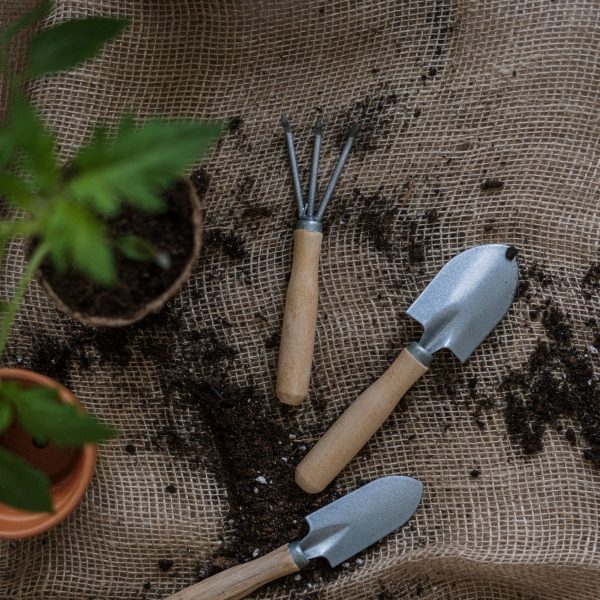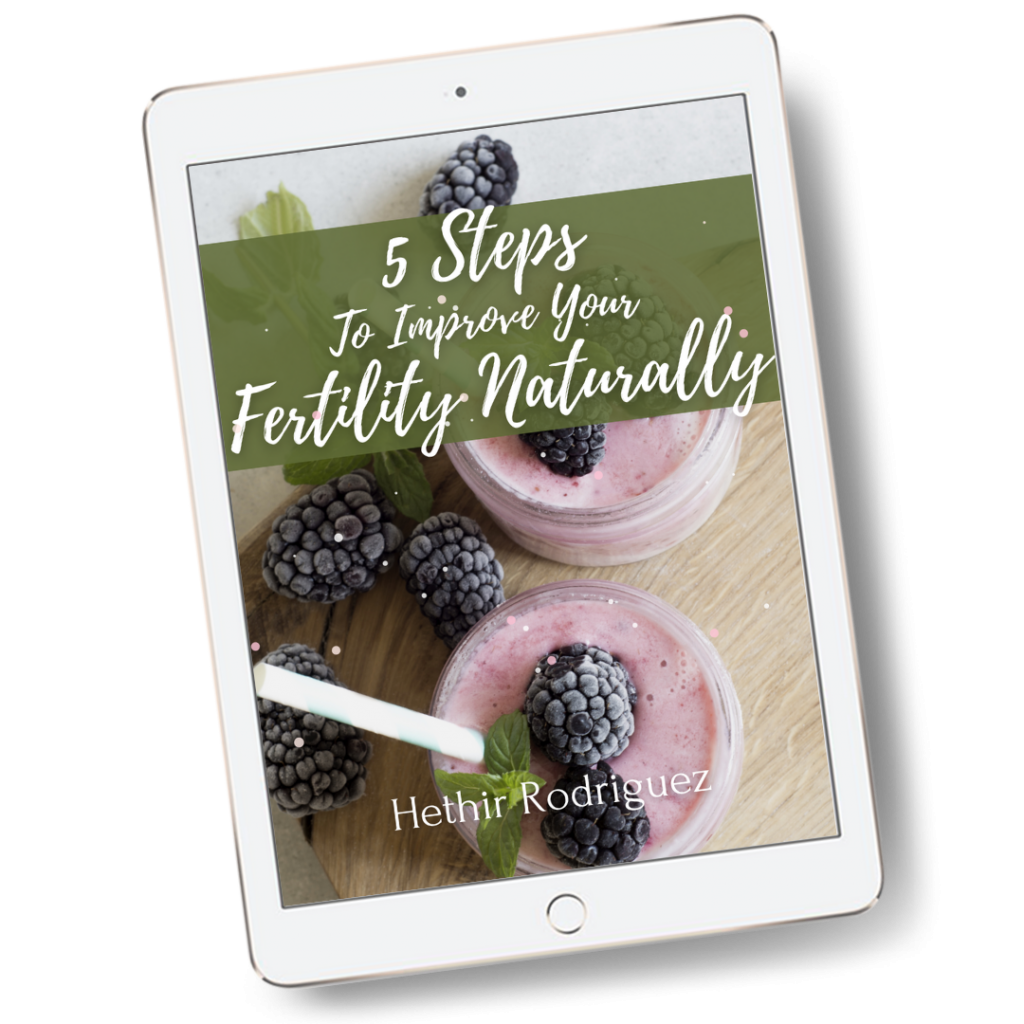It is prime wildcrafting season here in the US. Popping up all over your backyard right now are an abundance of herbs, many of them excellent for fertility. What many consider “weeds” we herbalists call “medicine”.
Okay, so maybe not all of you have a backyard or a yard of any kind for that matter. What I really am getting at here though, is that it is time to get out into your local backyard – the pristine wild spaces where weeds rule the land. This is where to find the most potent herbal medicine.
First, let me lay some simple ground rules for gathering your own medicine…
Make a Plan Ahead of Time
Figure out where you are going to wildcraft and how long it will take you. Gather all the things you will need to harvest and perhaps make some of the medicines there in the field. If you have never wildcrafted before, it may be best to brush up on the basics.
Wildcrafting is the practice of gathering your own herbs for use as medicine. There are a few simple rules to follow:
- Use common sense – obey land laws, choose clean areas away from roadsides or areas that may be sprayed with pesticides, herbicides and fertilizers.
- Choose where you want to gather the plants ahead of time, scope out the area beforehand, then make your gathering plan. Be completely sure that the plant you are harvesting is the right plant, this will help to avoid any poisonous look alikes; it is better to be safe than sorry.
- Be a steward of the land – do some research on the plants beforehand and avoid harvesting endangered plants. Leave the land looking as close to the way it looked before you got there, or better.
- Never over-harvest – if you only find a small stand of the plant you are wanting to harvest, avoid taking it. Take only what you need. Leave as much of the plant (parts you aren’t using) as you can.
Be Prepared
Gather all the tools you will need:
- Basket /s or large paper bag/s, multiple for multiple herbs
- Hori-hori – a digging/cutting tool, small hand shovel, dandelion digger
- Sharp gardening scissors
- For your health – drinking water, sunscreen, natural bug repellent, hat, first aid kit, etc.
- Plant identification book
If you have never gathered and processed your own herbs, you may also want to brush up on the basics of drying them for tea, or making your own tinctures, etc. Many books cover this information, here are some that have good explanations, so you will know what to do with the herbs once you get home:
The New Holistic Herbal by David Hoffman, Element Books
The Encyclopedia of Medicinal Plants by Andrew Chevallier, DK Publishing
The New Age Herbalist by Richard Mabey, Fireside Books of Simon & Schuster Publishing
The Herbs
Burdock (Arctium lappa)
Plant part used: roots, rhizome
When to harvest: September and October
Wash and dry thoroughly, chop or slice while fresh to either dry or tincture.
Burdock root is warm, sweet, bitter, and oily. It is deeply nourishing and blood purifying. This plant supports the health of the liver (vital to hormone balance), kidneys (reproductive virility), gall bladder, tissues, and the endocrine system. Burdock supports fertility in the following ways:
- strengthening for the uterus
- purifying the liver and gallbladder for optimal hormonal balance
- because it is oily, it is nourishing to all tissues of the body, including the reproductive organs; supports cellular structure
- a wonderful nutritive and cleansing herb that should be part of preconception detoxification and pregnancy preparation
- excellent for preventing water retention and providing nutrition in pregnancy
Use:
Decoction: Add 1 teaspoonful of dried burdock root to 1 cup water, bring to a boil, simmer covered for 10-15 minutes. Drink 3 times a day.
Tincture: Take 2 – 4ml, 3 times a day
Dandelion (Taraxacum officinale)
Plant part used: root, rhizome, leaf
When to harvest: roots and rhizome are best collected from June through July. The leaves are fine to harvest anytime, but taste better when young.
Wash and dry the roots, chop up or slice while fresh to dry or tincture. Wash and dry leaves in a salad spinner. Lay flat and evenly on a screen or thin cotton towel to dry for tea. It is excellent fresh in salads.
Dandelion leaf is an excellent nutritive herb for preconception, pregnancy, and breastfeeding due to its high content of vitamins and minerals. The root aids liver health and stimulates digestion for improved hormonal balance. Like Burdock, this plant is supportive of liver and gallbladder, aiding function by gently cleansing them and reducing congestion.
The roots are bitter, sweet, salty, moist, and oily, whereas the leaves are bitter, moistening, cooling, salty, and mineral-rich. Dandelion is supportive of fertility by:
- aiding elimination of excess hormones from the liver, encouraging proper liver function for optimal hormone health
- supporting blood sugar levels, also extremely important for hormone balance
- providing a wide variety of vitamins and minerals for preconception
- reducing PMS
- stimulating digestion for improved utilization of dietary intake of other foods
Use:
Infusion: Add 1 teaspoon of dried dandelion leaves to 1 cup of water. Bring water to a boil beforehand, pour over dried leaves, steep for 10-15 minutes. Drink 3 times a day.
Decoction: Add 2 – 3 teaspoons of dried dandelion root to 1 cup of water, bring to a boil, simmer covered for 10-15 minutes. Drink 3 times a day.
Tincture: Take 5 – 10ml, 3 times a day
Caution: Has a slightly diuretic action, best avoided medicinally in pregnancy. Eaten fresh as a food source is fine in pregnancy.
Nettle (Urtica dioica)
Plant part used: young leaves
When to harvest: early spring, before flowering
Wash and dry leaves in a salad spinner. Lay flat and evenly on a screen or thin cotton towel to dry for tea. It is excellent fresh in pesto.
Nettle leaves and young shoots are sweet, bitter, salty, and mineral-rich. This plant supports healthy iron levels, boosts nutrition, while also improving liver and kidney function. In the case of reproductive health, nettle is useful for:
- reducing excessive (heavy) menstrual bleeding, as it is both astringent, high in iron and vitamin C for proper tissue and blood formation, while also helping to prevent anemia
- supporting proper liver function for hormonal balance support
- nutritious, promoting overall health for preconception, pregnancy, and lactation
- promoting menses through a boost in nutrition, optimized liver function, and nourishment of the blood
- encouraging healthy breast milk production
- supporting thyroid health (hypothyroidism) by providing key vitamins and minerals necessary for the thyroid to manufacture thyroid hormones
Use:
Infusion: Add 1 – 3 teaspoons of dried nettle leaves to 1 cup of water. Bring water to a boil beforehand, pour over dried leaves, steep for 10-15 minutes. Drink 3 times a day.
I like to make large batches of this herb as a strong infusion with other herbs, you can get my fertility tea recipes here…
Tincture: Take 1 – 4ml, 3 times a day
Caution: Nettles can cause urticaria (rash) from the tiny spines on it. Be sure to wear proper clothing and gloves when harvesting this plant.
Raspberry leaf (Rubus idaeus)
Plant part used: leaves
When to harvest: all summer
Wash and dry leaves in a salad spinner. Lay flat and evenly on a screen or thin cotton towel to dry for tea. I love to combine this with red clover, dandelion lf., peppermint, and nettles for a nourishing daily infusion.
Raspberry leaf is astringent, highly nutritive, cooling, slightly sweet, and bitter. It works to tone the uterine muscles and normalize blood flow during menses. This is one of the best herbs for supporting the health of the female reproductive organs. It is one of the most well-known herbs for female fertility from preconception, to pregnancy and lactation! The other ways Raspberry leaf benefits fertility are:
- toning internal and external body tissues, including the uterus
- useful for preventing miscarriage due to uterine weakness
- reducing excessive menstrual bleeding and preventing anemia due to menorrhagia through its rich content of iron and vitamin C
- providing nutrition for preconception health through lactation
- preparing the body for childbirth
- chronic pelvic pain
- dysmenorrhea (painful menstruation)
Use:
Infusion: Add 1 – 3 teaspoons of dried raspberry leaves to 1 cup of water. Bring water to a boil beforehand, pour over dried leaves, steep for 10-15 minutes. Drink 3 times a day or up to a quart daily.
Learn more of the benefits of this plant, with delicious tea recipes here…
Caution: Raspberry plants have sharp spines; wear proper clothing and thick gloves when harvesting.
Red Clover (Trifolium pratense)
Plant part used: aerial parts (leaves and blossoms)
When to harvest: all summer
Wash and dry leaves and blossoms in a salad spinner. Lay flat and evenly on a screen or thin cotton towel to dry for tea. Check often, gently turn for even drying.
Red Clover is a sweet, nourishing food-like herb. Clover blossoms of this species are rich in a variety of vitamins and minerals. It is one of the best blood-purifying herbs, aiding in detoxification from environmental pollutants prior to conception. Red clover is also a wonderful source of phytoestrogens, shown to help protect the body from xenohormones. This plant also has a moistening effect on the body, making it useful for those women with low cervical mucus production. Red clover encourages healthy fertility by:
- being a rich source of calcium and magnesium, which are essential for proper smooth muscle function, thereby reducing the incidence of menstrual cramps
- aiding the body in maintaining proper uterine tissue formation
- improving digestion and increasing appetite (useful for those with infertility issues associated with being underweight)
- providing a variety of vitamins and mineral for preconception nutrition
- aiding kidney function and blood purification for preconception cleansing
- moistening, aiding vaginal tone and dryness
Use:
Infusion: Add 1 – 3 teaspoons of dried red clover leaves and blossoms to 1 cup water. Bring water to a boil beforehand, pour over dried leaves and blossoms, steep for 10-15 minutes. Drink 3 times a day or up to a quart daily.
Tincture: Take 1 – 3ml, 3 times a day
Caution: Not recommended for combination with hormone replacement therapy. Not to be used in pregnancy or during lactation.
Yarrow (Achillea millefolium)
Plant part used: aerial parts (leaves and blossoms)
When to harvest: all summer
Wash and dry leaves and blossoms in a salad spinner. Lay flat and evenly on a screen or thin cotton towel to dry for tea. Or learn how to make a Yarrow massage oil for your abdomen (great prior to Self Fertility Massage) here…
By far, Yarrow is one of my most favorite herbs, it is just so darn effective for a WIDE variety of ailments. This pungent, bitter, slightly astringent, slightly moistening plant is mysterious in its actions – it is a balancing herb. The actions of this herb are one of opposites, like a tightrope walker, it seems impossible, but yet it works this way. Here are my examples in just its usefulness for fertility:
- promotes menstruation, can be used to help bring on absent menstruation or increase menstrual flow by increasing circulation to the reproductive organs
- On the flip side, it is also astringent, curbing heavy menses, especially in those with flooding due to uterine fibroids
- it is widely used in Traditional Western Herbalism to resolve uterine fibroids
- both drying and moistening; promotes sweating and detoxification, but strengthens and tightens tissues – excellent for preparing the body for pregnancy
- anti-inflammatory and antispasmodic – soothing for painful, irritated reproductive health issues including endometriosis, uterine fibroids, Asherman’s syndrome, dysmenorrhea, etc.
- promotes healthy, adequate amounts of vaginal discharge, reduces excessive vaginal discharge
- stimulating and diffusive to alleviate congestion in the reproductive organs
Use:
Infusion: Add 1 – 2 teaspoons dried yarrow to 1 cup of water. Bring water to a boil beforehand, pour over dried leaves and blossoms, steep for 10-15 minutes. Drink 3 times a day. I love to combine this with red clover and bee balm (Monarda fistulosa).
Tincture: Take 2 – 4ml, 3 times a day
Caution: Seek professional guidance for use in pregnancy or during lactation. Do not consume if you have an allergy to plants in the Compositae family.
Yellow Dock (Rumex crispus)
Plant part used: roots and rhizome
When to harvest: August to October
Wash and dry thoroughly, chop up or slice while fresh to either dry or tincture.
Yellow dock is not the most well-known herbal remedy, but it is easily recognizable as an invasive weed. The root of this plant is excellent for the digestive system, aiding in its function, enhancing the use of nutrients and proper elimination. Proper digestive function could be said is one of the key foundations for health, including reproductive health. A slightly sour, bitter, cooling, and astringent herb, Yellow dock is useful for fertility in the following ways:
- irregular menstrual cycle
- prevention of anemia
- amenorrhea
- particularly useful for girls in puberty just beginning menstruation
- helps to relieve nervous tension during menstruation
- improves poor digestion, relieves constipation and hemorrhoids for optimal utilization of daily intake of nutrients
- blood purifying, great for preconception detoxification
Use:
Decoction: Add 1 teaspoonful dried yellow dock root to 1 cup of water, bring to a boil, simmer covered for 10-15 minutes. Drink 3 times a day. Not the best tasting herb, in my opinion the tincture is more palatable.
Tincture: Take 1 – 4ml, 3 times a day
Caution: Seek professional guidance for use in pregnancy or lactation.
For the Love of Herbs – My Closing Thoughts…
Medicine is all around you, most of us don’t even realize that. Healing doesn’t always come from a doctor or pill; it comes from the earth. Take some time to connect to the wild spaces around you, touch nature and let her nourish your body in order to bring it back to balance.
If you have any questions regarding this post, wildcrafting or use of herbs for fertility please reach out to us!
- Romm, Aviva. (2010). Botanical Medicine for Women’s Health. St. Louis, Missouri: Churchill Livingstone/Elsevier
- Wood, Matthew. (2004). The Practice of Traditional Western Herbalism – Basic Doctrine, Energetics, and Classification. Berkeley, California: North Atlantic Books
- Hoffman, David. (1998). The New Holistic Herbal. Boston, Massachusetts: Element Books
- Mills, Simon; Bone, Kerry. (2005). The Essential Guide to Herbal Safety. St. Louis, Missouri: Churchill Livingstone/Elsevier





